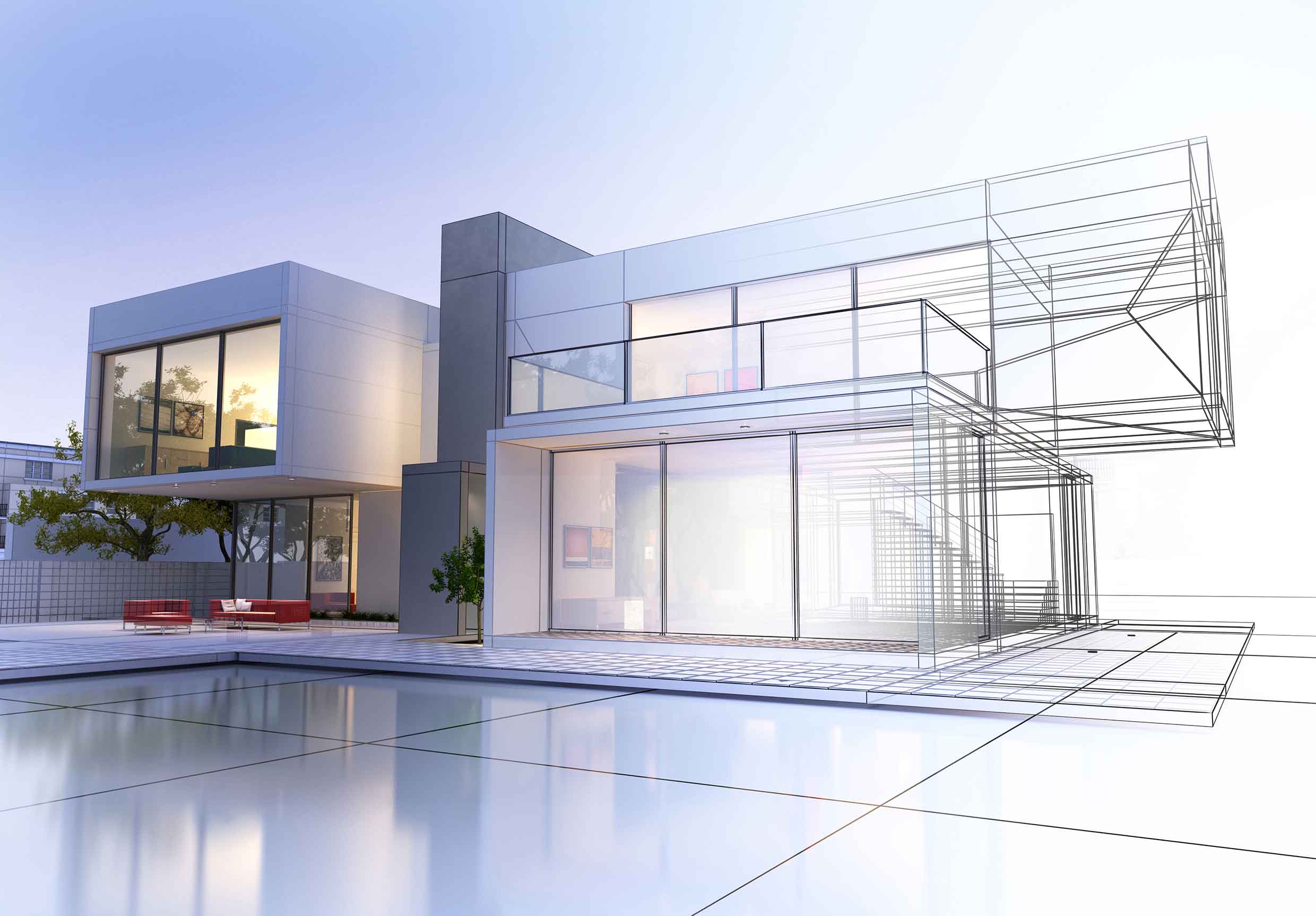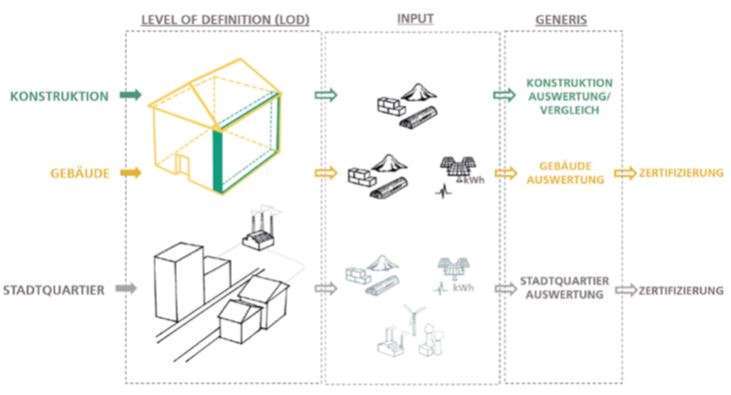


In 2019, climate change became more and more the focus of public interest: The climate impact is becoming noticeable, and public pressure to reduce the global carbon footprint is rising. The EU therefore adopted the European “Green Deal” policy. This will finance measures to help transform the EU economy towards a sustainable future. The reduction of emissions in the building sector plays a central role here because around 30 percent of emissions in Germany come from the building sector (as of 2018, source Federal Ministry for the Environment, Nature Conservation and Nuclear Safety: Climate protection in figures, 2019).
Need for efficient calculation tools
In Germany alone, 130,000 architects are increasingly searching for ways to plan buildings more sustainably. Consequently, the building sector needs an efficient assessment tool for analyzing greenhouse gas emissions. The GENERIS® software provides a simple and intuitive solution for the user in this field.
The software solution
GENERIS® is the key to end-to-end support when it comes to preparing life cycle assessments (LCA's) of buildings. For example, one target could be to certify buildings according to the criteria of the German Sustainable Building Council (DGNB). The software can be used to model a building from an extensive catalog of standard constructions, to additionally enter the pre-calculated operating parameters and to subsequently evaluate the building project with regard to the results of its life cycle assessment. Using the Ökobau.dat databank as a basis, it is also possible to make individual constructions, even layered structures, and to add them into the upcoming building project. The result is an evaluation which, in addition to LCA figures, also includes all the necessary assessment points for DGNB certification. If the focus is on integrating ecological building components, the “Compare components” function may prove to be useful. All in all, the GENERIS® software from Fraunhofer IBP offers an uncomplicated solution for preparing building LCA’s. The software tool has already been successfully implemented in various ways in research and industrial projects.
Numerous advantages and possibilities
GENERIS® significantly reduces the risk of an unreliable assessment in DGNB pre-certification, while at the same time increasing the efficiency of proof for the certificate. The building LCA can be easily and reliably calculated using a standard catalog containing extensive construction examples. In addition to the basic information contained in the Ökobau.dat databank, European data (ESUCO) are also provided; data sets from other LCA databases or LCA programs can be imported. The ability to compare different designs facilitates the final selection. The first LCA results can already be estimated in the design phase, paving the way for optimization measures in the early planning stages. The “Team” function enables several people to work together on a project. In addition, GENERIS® offers a variety of assessment options and the data can be further processed in Excel.